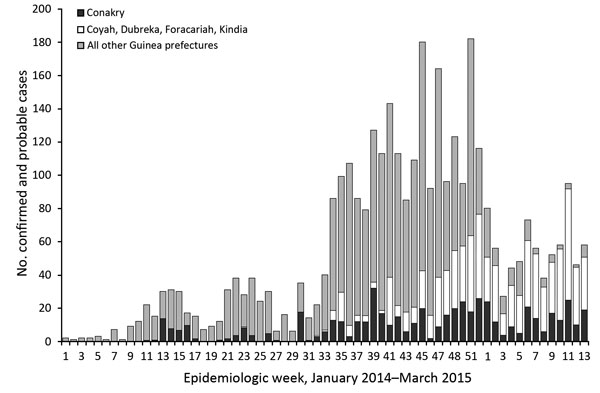Volume 22, Number 2—February 2016
Synopsis
Epidemiology of Epidemic Ebola Virus Disease in Conakry and Surrounding Prefectures, Guinea, 2014–2015
Figure 1

Figure 1. Ebola virus disease cases in Conakry, the capital city; 4 surrounding prefectures; and all remaining prefectures, Guinea, January 1, 2014–March 29, 2015. Data were obtained from the Guinea Ministry of Health national case database (Epi Info Viral Hemorrhagic Fever Application). Epidemiologic week 52 ended on December 27, 2014.
Page created: January 14, 2016
Page updated: January 14, 2016
Page reviewed: January 14, 2016
The conclusions, findings, and opinions expressed by authors contributing to this journal do not necessarily reflect the official position of the U.S. Department of Health and Human Services, the Public Health Service, the Centers for Disease Control and Prevention, or the authors' affiliated institutions. Use of trade names is for identification only and does not imply endorsement by any of the groups named above.